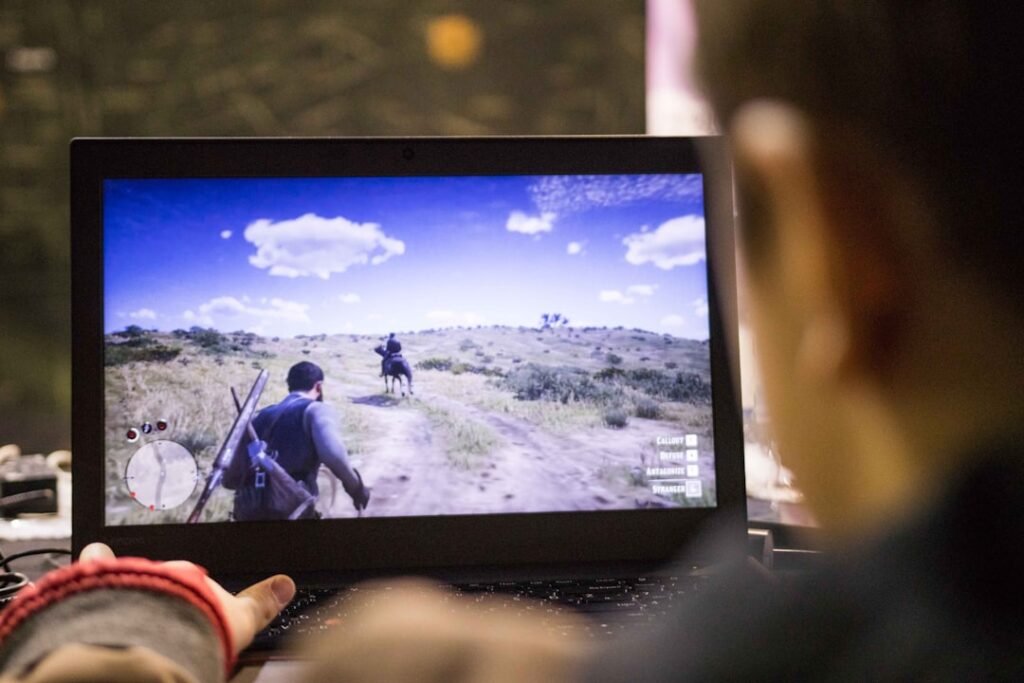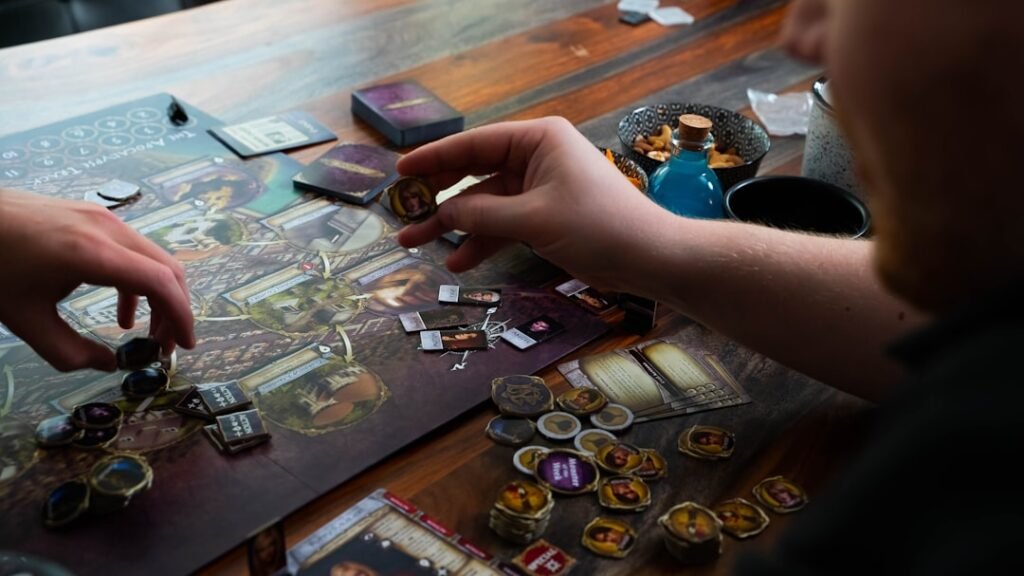Now Reading: Unraveling the Mystery: Outer Wilds’ Storytelling Mastery
-
01
Unraveling the Mystery: Outer Wilds’ Storytelling Mastery
Unraveling the Mystery: Outer Wilds’ Storytelling Mastery

As I embarked on my journey through the universe of Outer Wilds, I was immediately struck by its unique charm and the sense of wonder it instilled in me. Developed by Mobius Digital, this indie game invites players into a beautifully crafted solar system filled with mysteries waiting to be unraveled. The game’s premise revolves around a young space explorer who is part of a small alien civilization known as the Hearthians.
As I took my first steps into this vibrant world, I quickly realized that Outer Wilds is not just a game; it is an experience that intertwines exploration, storytelling, and philosophy in a way that few other titles manage to achieve. The game’s setting is a captivating blend of whimsical design and cosmic intrigue. Each planet is distinct, offering its own set of challenges and secrets.
The art style, reminiscent of a storybook, combined with the hauntingly beautiful soundtrack, creates an atmosphere that is both inviting and melancholic. As I navigated through the various celestial bodies, I felt a profound connection to the universe and its inhabitants. Outer Wilds is not merely about reaching a destination; it is about the journey itself, filled with moments of discovery that resonate deeply with the player.
Key Takeaways
- Outer Wilds is a unique and innovative video game that offers a non-linear narrative and emphasizes exploration.
- The game’s storytelling approach is unconventional, using environmental storytelling and player agency to uncover the story.
- Exploration plays a crucial role in uncovering the story, as players piece together the narrative through their discoveries.
- Outer Wilds subverts traditional storytelling tropes, offering a thought-provoking and emotionally impactful experience.
- The game explores philosophical and existential themes, leaving a lasting legacy in video game storytelling.
The Unique Storytelling Approach of Outer Wilds
What sets Outer Wilds apart from many other games is its innovative storytelling approach. Rather than relying on traditional cutscenes or linear dialogue, the narrative unfolds organically through exploration and discovery. As I ventured into the depths of ancient ruins or soared through the skies of alien worlds, I encountered fragments of lore that pieced together the history of the universe.
The game’s narrative is rich with themes of curiosity and the pursuit of knowledge. Each discovery I made felt like a personal triumph, as if I were unearthing secrets that had been hidden for eons.
The way the story is woven into the fabric of the gameplay encourages players to engage with their surroundings and think critically about what they encounter. This unique approach to storytelling not only enhances the overall experience but also fosters a deeper emotional connection to the world and its characters.
The Non-linear Narrative of Outer Wilds

Outer Wilds embraces a non-linear narrative structure that allows players to explore at their own pace. This freedom was exhilarating for me; I could choose which planets to visit and in what order, leading to a sense of agency that is often lacking in more linear games. The non-linear design means that each player’s experience can be vastly different, shaped by their choices and curiosity.
As I wandered through the solar system, I found myself drawn to certain locations based on my interests, leading to unexpected discoveries that enriched my understanding of the overarching story. This non-linear approach also mirrors the themes of exploration and discovery that are central to the game. Just as I was free to chart my own course through space, the narrative allowed for multiple interpretations and paths.
I could delve into the lore of the Nomai, an ancient civilization whose remnants littered the planets, or focus on the mysteries surrounding the time loop that governs my character’s journey. This flexibility not only kept me engaged but also encouraged me to reflect on my choices and their implications within the broader narrative context.
The Role of Exploration in Uncovering the Story
Exploration is at the heart of Outer Wilds, serving as both a gameplay mechanic and a narrative device. As I traversed the various planets, each environment was meticulously designed to encourage curiosity and experimentation. The thrill of discovering hidden paths or secret locations was palpable, and each new find felt like a piece of a larger puzzle falling into place.
The game rewards inquisitive players, inviting them to dig deeper into its mysteries rather than simply following a predetermined path. The act of exploration also fosters a sense of wonder and awe. As I gazed upon breathtaking vistas or navigated treacherous terrain, I felt a connection to the universe that transcended mere gameplay mechanics.
The landscapes were not just backdrops; they were integral to the story itself. Each planet held clues about the past and hints about what lay ahead, creating an intricate web of narrative threads that I was eager to untangle. This emphasis on exploration transformed my experience from one of passive consumption to active engagement with the world around me.
The Use of Environmental Storytelling in Outer Wilds
One of the most striking aspects of Outer Wilds is its masterful use of environmental storytelling. The game world is filled with visual cues and artifacts that convey rich narratives without relying on explicit exposition. As I explored ancient ruins or stumbled upon remnants of past civilizations, I was able to piece together stories simply by observing my surroundings.
This subtle form of storytelling allowed me to immerse myself in the lore without feeling overwhelmed by information. For instance, as I wandered through a crumbling Nomai structure, I noticed murals depicting their history and struggles. These images spoke volumes about their culture and their ultimate fate without requiring lengthy dialogue or text.
This method of storytelling not only enhances immersion but also encourages players to engage with their environment more thoughtfully. Every detail matters; every corner holds potential revelations that contribute to my understanding of the world and its inhabitants.
The Importance of Player Agency in the Storytelling

Player agency is a crucial element in Outer Wilds’ storytelling framework. The game empowers me to make choices that influence my experience and understanding of the narrative. Unlike many games where players are funneled along a specific path, Outer Wilds allows for exploration and experimentation, giving me control over how I engage with the story.
This sense of agency fosters a deeper emotional investment in the narrative, as my discoveries feel personal and significant. Moreover, this player-driven approach encourages me to reflect on my actions and their consequences within the game world. As I uncover secrets about the Nomai and their tragic fate, I am reminded that my choices matter—not just in terms of gameplay but also in how I interpret the story.
This dynamic relationship between player agency and storytelling creates a rich tapestry of experiences that resonate long after I’ve put down the controller.
How Outer Wilds Subverts Traditional Storytelling Tropes
Outer Wilds boldly subverts traditional storytelling tropes found in many video games. Instead of presenting a clear-cut hero’s journey or a straightforward conflict, it embraces ambiguity and complexity. The narrative does not follow a conventional arc; instead, it unfolds in layers, revealing truths gradually as I explore.
The game also challenges notions of success and failure. In many games, players are rewarded for overcoming obstacles or defeating enemies; however, Outer Wilds presents a more nuanced perspective on achievement.
The time loop mechanic serves as a poignant reminder that some events are beyond my control, emphasizing themes of inevitability and acceptance rather than triumph over adversity. This subversion invites me to engage with the story on a deeper level, prompting reflection on broader existential themes.
The Emotional Impact of Outer Wilds’ Storytelling
The emotional impact of Outer Wilds’ storytelling is profound and resonant. As I delved deeper into its narrative layers, I found myself grappling with feelings of loss, curiosity, and wonder. The fate of the Nomai civilization weighed heavily on me as I uncovered their tragic history—a poignant reminder of the fragility of existence in an ever-expanding universe.
Each revelation brought with it a mix of awe and sorrow, creating an emotional landscape that lingered long after my play sessions ended. Moreover, the game’s ability to evoke such strong emotions stems from its commitment to authenticity in storytelling. The characters I encountered—though often remnants of a bygone era—felt real and relatable in their struggles and aspirations.
Their stories resonated with my own experiences, creating a powerful connection that transcended the boundaries of gameplay. In this way, Outer Wilds not only tells a story but also invites me to reflect on my own place within it.
The Connection Between Gameplay and Story in Outer Wilds
In Outer Wilds, gameplay and story are intricately intertwined, creating a seamless experience that enhances both elements. The mechanics encourage exploration and experimentation, while the narrative rewards curiosity with rich lore and emotional depth. As I navigated through space, each action I took felt purposeful; every decision contributed to my understanding of the world around me.
This connection between gameplay and story fosters an immersive experience that keeps me engaged throughout my journey. The act of exploring becomes more than just a means to an end; it transforms into an integral part of storytelling itself. As I uncover secrets about the universe, I am not merely progressing through levels; I am actively participating in a narrative that unfolds uniquely for me.
The Philosophical and Existential Themes Explored in Outer Wilds
Outer Wilds delves into profound philosophical and existential themes that resonate deeply with players like myself. The game grapples with questions about existence, knowledge, and our place in the universe—topics that have intrigued humanity for centuries. As I explored its vast cosmos, I found myself contemplating my own existence and purpose within it.
The cyclical nature of time presented in Outer Wilds serves as a poignant metaphor for life itself—an exploration of inevitability and acceptance in the face of uncertainty. The game encourages me to embrace curiosity while acknowledging that some questions may remain unanswered. This philosophical depth elevates Outer Wilds beyond mere entertainment; it becomes an invitation to reflect on life’s mysteries and our quest for understanding.
The Legacy of Outer Wilds’ Storytelling in Video Games
As I reflect on my experience with Outer Wilds, it becomes clear that its legacy will resonate within the gaming community for years to come. By pushing boundaries in storytelling through non-linear narratives, environmental cues, and player agency, it has set a new standard for how stories can be told in video games. Its impact can already be seen in subsequent titles that seek to emulate its innovative approach.
Outer Wilds has inspired developers to explore new ways of engaging players emotionally while challenging traditional storytelling conventions. Its emphasis on exploration as a means of uncovering narrative has opened doors for future games to prioritize player-driven experiences over scripted events. As I look forward to what lies ahead in gaming, I carry with me the lessons learned from Outer Wilds—a testament to the power of storytelling in shaping our understanding of both virtual worlds and our own lives.
If you’re a fan of storytelling in video games like Outer Wilds, you may also be interested in reading about how to create the ultimate gaming room. This step-by-step guide provides tips and ideas for designing a space that enhances your gaming experience. Whether you’re looking to upgrade your current setup or start from scratch, this article offers valuable insights for creating a gaming environment that immerses you in the stories and worlds of your favorite games.
FAQs
What is Outer Wilds?
Outer Wilds is a critically acclaimed action-adventure game developed by Mobius Digital and published by Annapurna Interactive. It was released in 2019 for Microsoft Windows, Xbox One, and PlayStation 4.
What makes Outer Wilds a storytelling masterpiece?
Outer Wilds is considered a storytelling masterpiece due to its non-linear narrative, immersive world-building, and thought-provoking themes. The game allows players to uncover the story at their own pace, creating a deeply personal and impactful experience.
How does Outer Wilds deliver its story?
Outer Wilds delivers its story through environmental storytelling, text-based lore, and player exploration. The game encourages players to piece together the narrative by exploring the game world, interacting with characters, and uncovering hidden secrets.
What are some of the themes explored in Outer Wilds?
Outer Wilds explores themes such as curiosity, exploration, the passage of time, and the nature of the universe. The game’s narrative encourages players to contemplate their place in the cosmos and the mysteries of existence.
What sets Outer Wilds apart from other storytelling games?
Outer Wilds stands out from other storytelling games due to its open-ended narrative structure, player-driven exploration, and philosophical storytelling. The game’s emphasis on player agency and discovery sets it apart as a unique and innovative storytelling experience.



























